Filter by
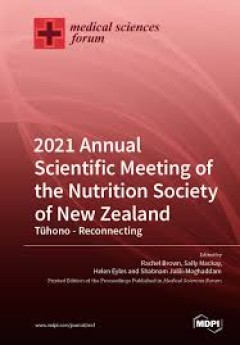
2021 Annual Scientific Meeting of the Nutrition Society of New Zealand: Tūho…
The annual scientific conference of the Nutrition Society of New Zealand was held virtually on the 2nd and 3rd December 2021. The aim of the annual conference is to foster discussion and disseminate the results of nutrition-related research. The conference also provides an opportunity for those working in practice to share their experiences and keep up to date with scientific advancements. The …
- Edition
- -
- ISBN/ISSN
- 9783036554655
- Collation
- -
- Series Title
- -
- Call Number
- -

A Comprehensive Survey of International Soybean Research : Genetics, Physiolo…
Soybean is the most important oilseed and livestock feed crop in the world. These dual uses are attributed to the crop's high protein content (nearly 40% of seed weight) and oil content (approximately 20%); characteristics that are not rivaled by any other agronomic crop. Across the 10-year period from 2001 to 2010, world soybean production increased from 168 to 258 million metric tons (54% inc…
- Edition
- -
- ISBN/ISSN
- 978-953-51-4259-1
- Collation
- 626 hlm
- Series Title
- -
- Call Number
- -

A Comprehensive Review of the Versatile Dehydration Processes
This book provides a comprehensive overview of dehydration techniques. It includes six chapters that discuss various methods of food dehydration. Some of these processes include advanced drying methods that utilize microwaves, infrared radiation, and radio frequency, as well as techniques like hot air, vacuum, fluidized bed, and freeze-drying. Chapters explore the advantages and disadvantages o…
- Edition
- -
- ISBN/ISSN
- 978-1-83768-142-6
- Collation
- 110 hlm
- Series Title
- -
- Call Number
- -
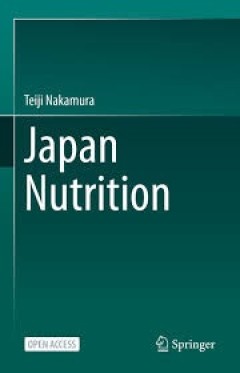
Japan Nutrition
- Edition
- -
- ISBN/ISSN
- 978-981-16-6316-1
- Collation
- -
- Series Title
- -
- Call Number
- -
- Edition
- -
- ISBN/ISSN
- 978-981-16-6316-1
- Collation
- -
- Series Title
- -
- Call Number
- -
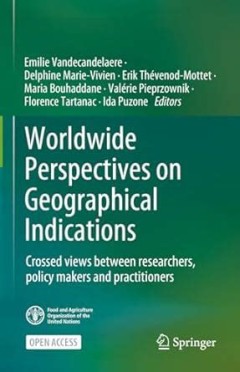
Worldwide Perspectives on Geographical Indications = Crossed views between re…
Geographical Indications (GI) are distinctive signs that associate products of quality and reputation with their place or area of production and thereby help identify and distinguish such products on the market. In July 2022, the Food and Agriculture Organization of the United Nations (FAO) and the Centre de coopération internationale en recherche agronomique pour le dével oppement (CIRAD)…
- Edition
- -
- ISBN/ISSN
- 9783031716416
- Collation
- XXII, 394 hlm; ill., lamp.,
- Series Title
- -
- Call Number
- -

The Halal Industry in Asia = Perspectives from Brunei Darussalam, Malaysia, J…
- Edition
- -
- ISBN/ISSN
- 9789819603923
- Collation
- XXII, 420 hlm; ill., lamp.,
- Series Title
- -
- Call Number
- -
- Edition
- -
- ISBN/ISSN
- 9789819603923
- Collation
- XXII, 420 hlm; ill., lamp.,
- Series Title
- -
- Call Number
- -

Food and agribusiness in 2030: a roadmap
"At the moment of writing, we are in the last quarter of an incredible year. The world is facing an astonishing number of changes resulting from one of the worst pandemics ever. Food, agribusiness, and biofuel chains will be working in a new macro environment and will operate differently after 2020. These structural changes come on top of the need to increase food production to feed 9 billion p…
- Edition
- -
- ISBN/ISSN
- 978-90-8686-907-7
- Collation
- oer.unej.ac.id
- Series Title
- -
- Call Number
- -

Diversity and change in food wellbeing Cases from Southeast Asia and Nepal
"This volume presents recent research on food and nutrition in Indonesia, Philippines, Vietnam and Nepal. The overall theme is food wellbeing, which is seen as having two key components: food and nutrition security, and food sovereignty. The cases cover a diversity of contexts, ranging from indigenous communities and rural villages to the urban environment. The studies highlight the subjective …
- Edition
- -
- ISBN/ISSN
- 978-90-8686-864-3
- Collation
- oer.unej.ac.id
- Series Title
- -
- Call Number
- -
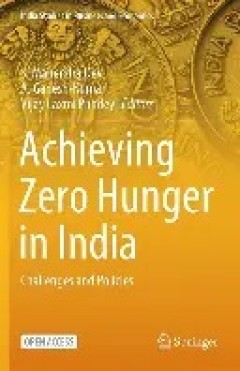
Achieving Zero Hunger in India Challenges and Policies
This open access volume discloses rich set of findings and policy recommendations for India towards achieving the SDG 2.1 target of zero hunger by 2030. Through its fourteen chapters, it takes an integrated approach by examining diverse aspects of food and nutrition security through multidisciplinary lens of Agricultural Economics, Nutrition, Crop Sciences, Anthropology and Law, while being roo…
- Edition
- -
- ISBN/ISSN
- 978-981-99-4412-5
- Collation
- IX, 344
- Series Title
- -
- Call Number
- -
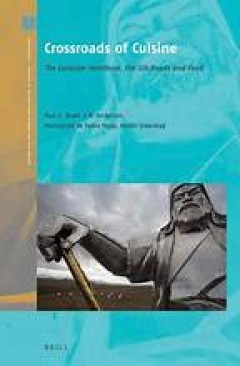
Crossroads of Cuisine
Crossroads of Cuisine provides a history of foods, and foodways in terms of exchanges taking place in Central Asia and in surrounding areas such as China, Korea or Iran during the last 5000 years, stressing the manner in which East and West, West and East grew together through food. It provides a discussion of geographical foundations, and an interlocking historical and cultural overview going …
- Edition
- -
- ISBN/ISSN
- 978-90-04-43210-9
- Collation
- oer.unej.ac.id
- Series Title
- Crossroads - History of Interactions across the Silk Routes, Volume: 2
- Call Number
- -
 Computer Science, Information & General Works
Computer Science, Information & General Works  Philosophy & Psychology
Philosophy & Psychology  Religion
Religion  Social Sciences
Social Sciences  Language
Language  Pure Science
Pure Science  Applied Sciences
Applied Sciences  Art & Recreation
Art & Recreation  Literature
Literature  History & Geography
History & Geography